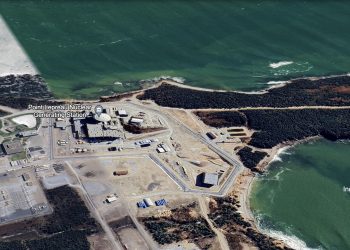The number of people across Canada who self-identify as Indigenous is growing rapidly. Some of that growth can be explained by the Indigenous children of the Sixties Scoop and residential school survivors re-discovering or accepting their Indigenous identities. However an entirely different group of Canadians has emerged. “Race-shifters” are white people with no or a small amount of Indigenous ancestry who identify as Indigenous.
Race-shifters live in every province, mostly in communities with large populations of French ancestry. In this province, for example, in 1996 and 2016, the population of New Brunswick was roughly the same. However in the 1996 census, only 950 people self-identified as Métis, but in the 2016 census that number jumped to 10,200. How is this possible?
The confusion includes the misconception that anyone with Indigenous ancestry can call themselves Métis. On the contrary, “Métis” has a specific definition in Canadian law. In 2003 the Supreme Court Powley decision described a Métis person as “one who self-identifies, has an ancestral connection to a historic Métis community, and is accepted by that community.” Anyone can self-identify as “Métis” when answering a census question, but not everyone of them is a member of the historic Métis Nation that originated in the Red River Valley of Manitoba.
Darryl Leroux has been exploring the race-shifting phenomenon for more than two decades. The social scientist from St. Mary’s University was in Fredericton Nov. 20 to speak about the process he has called “white settler revisionism,” a new wave of colonialism and to launch his new book, Distorted Descent: White Claims to Indigenous Identity published by the University of Manitoba Press.
His book, engaging with critical theories from Indigenous studies and genealogy studies, is based on his virtual ethnography research on social media forums. Leroux analyzes how white power and white settler colonialism gets “reconfigured into white settler indigeneity.”
The motivations of some race-shifters can be perverse. In Quebec for example, a group of white supremacists created a “Métis” group to increase their access to hunting and fishing territory. The first action of this new “Métis” group was to file for an injunction against a local Indigenous land claim. In his book, Leroux analyzes this kind of race-shifting as anti-indigenous politics. The largest self-identified “Métis” organization in Quebec, the Metis Nation of the Rising Sun, claims to have about 15,000 members.
In other instances, the white people claiming Indigenous identity are not trying to also claim Indigenous rights, they simply “want to avoid being white by adopting other identities,” Leroux explained. Many of these people have family stories going back generations about an Indigenous ancestor. “They are interpreting what they were told in the past to shape what they want to believe about themselves today,” he said.
As an example, Leroux described the “Mothers of Acadia Mitochondrial DNA Project” that claims to be about finding the truth but in reality is finding a way to confirm Indigenous identity.

For his book, Leroux analysed five online forums hosting discussions on many different genealogy topics, including white people exploring their Indigenous ancestry. In Canada, the phenomenon is most common among people with French ancestry who base their self-identification on an ancestor born more than 300 years ago. More than four million people today could create a family tree that would include one of three particular Indigenous women from the 16th century. What does that mean for them?
According to Leroux, probably 75% of French descendants in Canada have a small amount of Indigenous ancestry however, crucially, that does not make them Indigenous. In fact, he says, most French-heritage race-shifters have more English ancestry than Indigenous ancestry but they are not making the claim that they are English.
Most Canadian race-shifters live in Quebec but the percentage of the population claiming Indigenous identity is larger in Nova Scotia. Although the number of race-shifters has grown significantly in New Brunswick during the last two decades, Leroux pointed out that the percentage of race-shifters in the New Brunswick population is less than in neighbouring Nova Scotia, a fact he believes might be related to the stronger Acadian identity in this province. With a strong cultural identity, there is less incentive to seek out and adopt other identities.
However even in New Brunswick, the number of race-shifters has become a nuisance for some First Nations people in the province. It is more of a problem north of Moncton, in Miramichi and especially around Bathurst, he said. The race-shifters are “looking for Mi’kmaq people to confirm their identity, which can be very offensive.”
The website Race-Shifting created by Leroux with University of New Brunswick graduate student Stephanie Pettigrew has mapped hundreds of groups across Canada and court cases fought – and lost – by race-shifting groups claiming to have Indigenous rights.
The website shows the locations of, and information about, the five active organizations in New Brunswick: the “Communauté Wik-Wam-Sun-Oté” near Edmundston, the “Canadian Métis Council – Intertribal /Métis Genealogical Centre of Canada,” based in Oxbow NB near Grand Falls, the “Conseil Autochtone de la Côte-Est/Tribu Muis,” in Laplante, NB on the Baie des Chaleurs, the “East Coast First People Alliance/Alliance du premier peuple de la Côte-Est,” in Lameque and the “Metis Nation of Saint John,” in that city.
Leroux’s work has been praised by well-known Indigenous scholars, including Mi’kmaq scholar Pam Palmater, a professor at Ryerson University from Eel River Bar First Nation in New Brunswick. In her review, Palmater wrote that Leroux’s book is “a brave, original piece of scholarship,” that “exposes the extent to which white settler colonialism undermines Indigenous rights through the theft of Indigenous identity.” Palmater adds that the book is “a real wake-up call.”
Susan O’Donnell is a member of the NB Media Co-op editorial board and a member of the RAVEN project.








![Livestream: Social Forum in Wolastokuk — DAY 2 [video]](https://nbmediacoop.org/wp-content/uploads/2025/10/Penombre18-4-sur-4-120x86.jpg)

